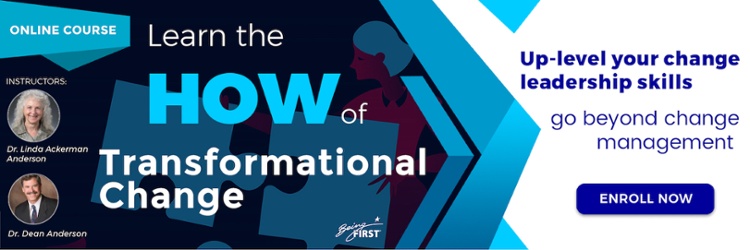Your vision for the future of your organization, by definition, is different from its current reality. To know what needs to be changed to reach your vision, as part of your strategic leadership, you must perform an assessment to compare your current reality with your vision. This is especially important if you are seeking breakthrough results from your changes.
Most organizational change models include an assessment phase to assist in strategic planning. In our methodology, this is not the traditional organizational assessment that surfaces any and all problems needing attention. This assessment is specifically designed to surface the conditions and criteria to use to shape the best future state design, and thus achieve the results needed for your business strategy to succeed. We call these criteria design requirements. They are used to directly formulate your best solution and can be used to compare different potential solutions to determine the best one.
There are three types of assessments to use to identify your design requirements:
- An organizational assessment to compare your current reality with the proposed future state
- Best practices from other organizations that have made this type of change
- Your customers' requirements for how to make the future state work in reality
What to Examine When Assessing Your Current State
Your assessment needs to focus on the requirements your vision has for both the business/operational components of your organization, as well as its human/cultural aspects. For each, you will need to determine:
- What already exists in your organization that supports your vision, such as structure, business processes, policies, technology, skills, culture, relationships and so on
- What is blocking the future state and must be changed or dismantled
- What must be created from scratch
This information is essential to shaping your design requirements. Examples are:
- Structure into business lines, not functional lines
- Use XYZ technology
- Be able to respond to customer needs within 8 hours
- Must share information across functional lines
- One point of customer contact for all service needs
Gathering Information for Your Assessments
To shape your design requirements, you can obtain assessment information from any of the members of your project community, especially people who are deeply involved in the transformation, impacted by it or have a stake in it. Engaging stakeholders in the study will fuel positive momentum. Customers and others outside your organization can also be a valuable source of input. You can use surveys, focus groups, interviews and digital requests for input from all stakeholder groups. Be aware that when you rely on external content experts to design your solution, you should ensure that the assessment information they gather or provide reflects the best thinking of your internal experts and end users.
What to Assess
The scope and vision of your change determines what you need to assess. For instance, if your transformation is focused on creating a new e-commerce model, you might ask about which products or services could be sold over the Internet, how you might best structure the sales organization for that outcome, what processes or systems are needed to support the new model, etc. You would not want to hear about other matters occurring in the organization that do not specifically relate to the e-commerce vision. Make sure you are looking for both the obvious organizational design requirements, such as those just listed, as well as the cultural, mindset and behavioral requirements. All will be needed for your future state to succeed.
Using Change Assessments to Ensure Stakeholder Engagement
Change assessments are useful for raising people's expectations and investment in the transformation. For instance, you might ask your end users their opinions about the three most important features required for the new organization to succeed or what they believe to be the three greatest hurdles to that success. You might ask what the managers or workers think the executives or consultants may be overlooking as they plan for the future, or what they needed from leadership for this new reality to sustain over time. Clearly, you would ask questions pertinent to the types of design requirements you are investigating.
When you involve your stakeholders in the assessment process, they will then expect some result to occur and will want to hear back from you about the impact of their input. Be sure to plan how you will inform your assessment participants about the results of the study and how these results will be used to influence organizational behavior and the design of your future state. Feed the assessment results into your communication plan to keep the greater organization abreast of progress in your transformation.
Using assessment tools to determine design requirements has many advantages…including aligning the executives around what they hope to accomplish, positive engagement of your end users, focused criteria with which to design your best future state (which minimizes political dynamics among design team members and executives!), and establishment of factors to evaluate the future state design once implemented. The time and energy you put into assessments and design requirements pays off in the long-term adoption and sustainment of business results and breakthrough.



